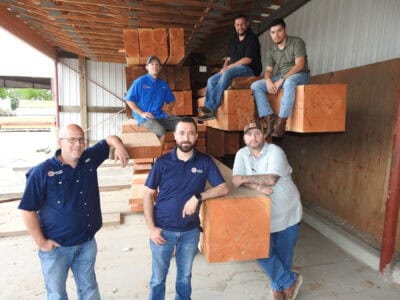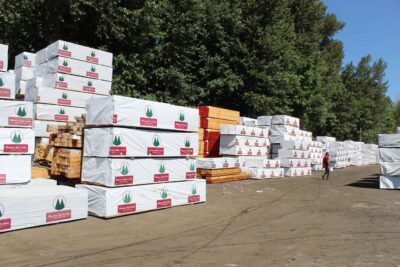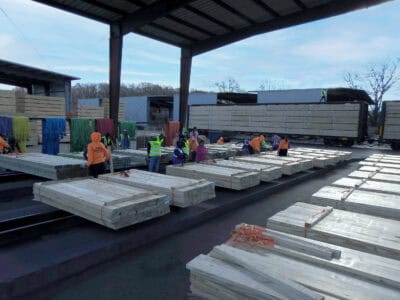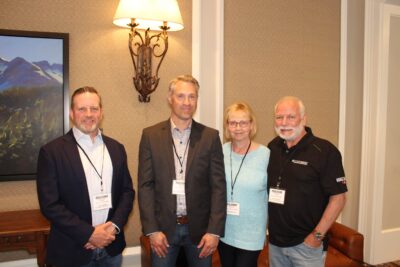While all of us in the wood products industry know we have a great story to tell, we still have work to do to get that story out to many in the broader public. There are a number of ways to do that, and we at AWC have been pursuing several avenues – YouTube videos, our updated website, speaking at conferences and meeting with a wider array of potential stakeholders. I know our members are making similar efforts. I am convinced, however, that the best way to really expose people to our industry and its incredible story is through in-person visits to mills and working forests.
We have had two recent experiences at AWC that reinforce this point, and each was carefully crafted to meet the audiences where they were as they thought about working forests and wood products. Designers to tech companies are serious about lowering the carbon impact of their buildings but still question the veracity of the wood products industry’s sustainability story. AWC hosted representatives from Building Transparency (the parent organization to the Embodied Carbon in Construction Calculator, or EC3), Perkins & Will, and the Carbon Leadership Forum for a two-day tour of managed forests and mills. The purpose of the tour was to demonstrate, in real time, both the extensive level of regulations of active forest management in the U.S. and the need for all types of forest management operations to support a viable, economically sustainable industry.
The first day of the tour took participants to actively managed industrial private land, public land, and to a small forest landowner operation. On the second day of the tour, the group visited a mill operating on a body of water and discussed not only mill efficiency, current technology, and job creation, but also highlighted the investments this particular mill made in environmental restoration work in collaboration with tribal governments.
Conversations ranged from explaining the difference between a clearcut and deforestation, to beginning to brainstorm methods for verifying that forest practices are sound without simply deferring to certification as the only proxy. From this tour and these discussions, the group shared a sincere intent to collaborate on policy development, and individuals that had previously taken anti-forestry positions appeared to soften after gaining a deeper understanding of the industry.
In a second example, AWC staff had the privilege of visiting Jordan Lumber in Mt. Gilead, North Carolina, for an in depth, in person look at mill and forestry operations. For staff who are advocating for the industry on a daily basis in the codes, standards and public policy arenas, seeing firsthand the dedication to stewardship, hard work, innovation, environmentalism and community was truly inspiring. Staff were also able to see it all – from seedling to harvest to mill to market – completing the picture and giving them an ability to speak intelligently and more deeply about it to the public. It was also a terrific way to come together as a staff, spend time together, and enjoy Jordan Lumber’s warm hospitality.
I firmly believe that there is no better way to educate and inspire the people we want to reach than these in-person opportunities. Once people see the care and dedication given to managing a working forest or meet mill employees and see how invested they are in what they do, they can’t help but come away with the knowledge that this industry is unique in the benefits it provides to our country and the environment. I know many of you have extensive programs partnering with local communities to bring students, educators and community leaders on site to see first-hand your stewardship efforts. These are important activities that take time and effort to plan, potentially taking resources away from the business at hand, but they are incredibly impactful. I would encourage expanding these efforts to reach architects, designers, code officials, environmentalists and others who may still wonder about whether there are enough trees to sustain the industry or whether wood products are truly sustainably produced. We have nothing to hide and much to be proud of, and this kind of “radical transparency” is just what I think is needed to make a difference, even one person at a time. We at AWC will certainly continue to look for these opportunities, and I hope you do as well.
We are fortunate to work for an industry that does so many things right. I know I come away from every mill visit inspired and rededicated to advocate for this industry. Seeing firsthand the impact of introducing new people to our operations, I want to invite each of you to welcome students, designers, and more to see for themselves the care and stewardship of our industry.






